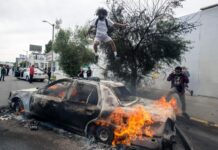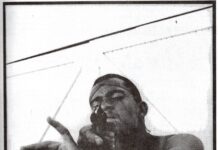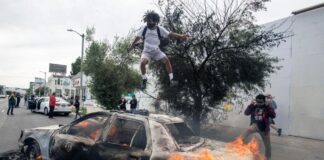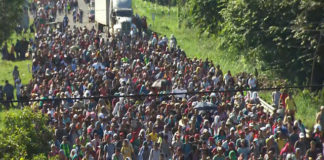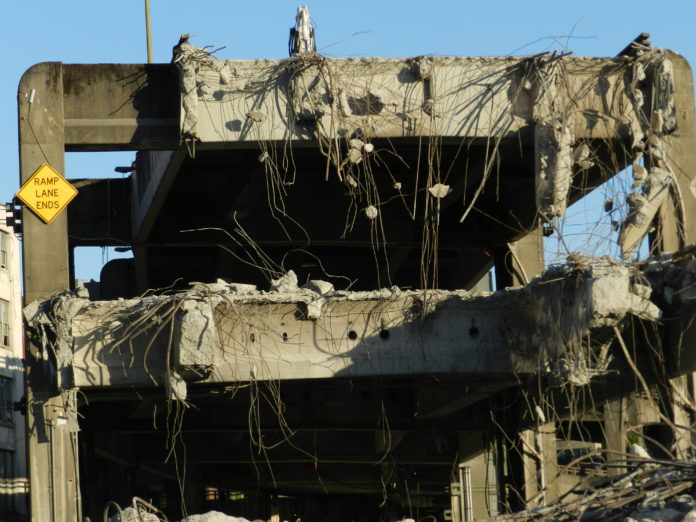
As human waste runs into Seattle’s waterfront and wasted humans continue to run amok throughout the seaside city’s streets, the glittering skyline above casts an ominous glow on the festering boil of dysfunction below
By Mark Cromer
It’s an early autumn evening and having returned across Puget Sound from a pleasant day spent out on Bainbridge Island I am heading out of Seattle and making my way back to Issaquah, driving south on 1st Avenue toward its slow curve at Pioneer Square that runs from Cherry Street down toward Yester Way and further south the city’s sister sports stadium-temples where the masses gather for high-priced sacrificial rites when I notice the cars in front of me are beginning to break intermittently; slowing before suddenly gunning it once more.
Debris in the roadway?
Then I see him. A lone man walking northbound through the middle of the street with his arms raised at his sides, fists clenched, staring into each car as it approaches him before launching a half-lunge toward the vehicles, as if he were going to start a fight with every passing auto, though seemingly careful not to make contact. As each car passes, each car gets the same treatment even as he keeps walking northbound, chest-puffed like he just scored a UFC knockout in the first 12 seconds.
As my turn with him arrives I catch his face for a moment as he approaches the hood of my mid-sized SUV and it looks familiar, well, at least to the extent that I have seen it before worn by thousands of other men and women all over this city and its surrounding environs for the past six years: heavily weathered and pocked with the debris of hard living and yet ablaze with a pair of eyes that burn like a wildfire from some ethereal plane none of us would care to see. He performs his ‘I’ll kick your car’s ass!’ maneuver as I pass and while I don’t hear a word I can see his lips are moving as fast as a tentpole preacher struck by the Holy Spirit at a backwoods gospel revival and almost certainly making as much sense as if he were speaking in tongues. He’s not dressed in ceremonial robes or sporting a religious collar, but he is wrapped in the multilayered uniform patched and melded together over what surely appears to be years of handouts and shoplifts.
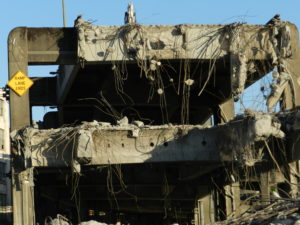
I accelerate and slide safely past the madman and as I make my way down to the I-90 for the short cruise east into the hillside suburbs I ponder that in Pamplona crazy adventurers run with the bulls but in Seattle the homeless urban berserkers now charge the cars. Well, all things considered in late 2019, that’s neither an outlier nor a surprise in Seattle and the social ill’s intransience and expansion is a sign of a tide that continues to rise amid political acrimony and accusation that’s simply a dead giveaway that the government at every level has no idea what to do and the corporations that own this city don’t really care as long as their shareholders don’t.
A short while later I settled comfortably in with a nightcap and contemplated how Seattle—just like its sister cities of any size up and down America’s Western shoreline—has indeed become the proverbial ‘tale of two cities,’ a not so empty cliché rooted in the brilliance of Charles Dickens classic novel that’s been too easily tossed casually about in the past during dinner party badinage among the finely feathered class about Dickens’ epic opener of it being the best of times and the worst of times, an era of wisdom and foolishness, of belief and incredulity.
Timeless words for sure and too easily applied ever since he penned them, but no, Seattle really is a tale of two cities in the 21stCentury that embodies an age of extreme wealth and stupefying poverty, of vast knowledge and fevered idiocy, of cultish belief and rabid denunciation. Except it’s not a tale. It’s all too true.
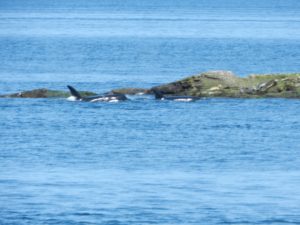
A few months ago I was out on the Salish Sea for what has become a summertime ritual of mine that takes me out of Anacortes and past the San Juan Islands and often into Canadian waters where Humpback whales and Orca are still to be found for now, though the fate of the resident killer whale pods in and around Puget Sound have teetered ever closer to oblivion as the pressures of humankind’s relentless growth as manifested in commercial shipping, fleet fishing and the ground war of development that has rolled across Northern Washington and slammed into its rivers that transport the salmon runs the resident Orca pods rely upon. This particular sojourn turned into quite a treat as a transient pod of killer whales swept in to hunt seals that had sought shelter on an outcropping of rocks. While the resident Orcas of the J,K and L pods feed on salmon, transient killer whales that visit these waters hunt sea mammals and watching them circle and loiter off the islet before rushing it, sometimes in pairs and from different directions was an awe-inspiring sight to behold.
They are iconic creatures across much of the globe but perhaps nowhere more so than the Pacific Northwest, where they have enjoyed a spiritual connection with the indigenous peoples for centuries and long before they became a tragic theme park attraction and an evergreen giftshop keepsake.
But just as the streets of Seattle have gone quite literally to shit of the human strain, so too has much of the complex and fragile ecosystem supporting the Orcas up and down the state, as its continually buffeted by human deuces of every conceivable variety—including the real deal. On July 19 of this year, more than 3 million gallons of raw human sewage poured from the West Point Treatment Plant, a sprawling facility in the city’s northwest Magnolia neighborhood, into Puget Sound. It was a massive shit slush that prompted authorities to immediately close beaches and, as The Seattle Times dryly noted: “banning [people] from making direct contact with the water.”
Gee, don’t take a dip in poop harbor? Put off that kayaking trip in bacteria bay? Good idea! But what of the creatures for whom the sound is home, the creatures for whom a massive wave of human fecal sludge rolling into their neighborhood is just the latest in a long and bitter history of defilements? Where are they supposed to go? According to the Washington State Department of Ecology, mere contact with the polluted seawater or its inflows in estuaries could result for humans in upper respiratory infections, skin ailments and gastroenteritis (a bacterial infection that results in…wait for it: the shits) among other mild to more serious maladies, so then imagine what the average harbor seal was looking at in his home waters. Or the fish they feed on and all manner of sea-reliant birds.
And while massive raw human sewage spills are not entirely rare events up in Northern Washington—one previously struck in June that closed Golden Gardens Park on the shoreline of Ballard—they are hardly the only hammer blows the ecosystem is suffering.
In a five-part special section published by The Seattle Times this fall that offered an in-depth look at where the human-fueled crisis has led the struggling resident Orca pods—and in doing so once again demonstrated what an old broadsheet still holding on from the glory days of legacy print media can accomplish when it wants to—summed it up in its closing installment Hostile Waters: Chasing A Memory, complete with a powerful shot of an Orca exploding from the water in full breach, and posing the question: “In California, Orcas and salmon have become so scarce, people have forgotten what once was. Will the Northwest be next?”
The answer seems quite obvious: yes, it will be. In fact, it already is.
Well not so much that what once was will soon be forgotten, for enough of it is still here to easily remember, but Washington’s becoming California has been long in the making, and as a writer who has lived in both states I have witnessed the transition of Northern Washington into a knock-off of my native Southern California for years now. Orcas still appear along the shorelines of Southern California, but it’s an event of such rarity that it garners news coverage when they’re seen. To understand the fate of the Orca in California and Washington one only need to consider that the North American Gray Wolf prowled with pride across California, along with the cougar and of course the California Grizzly Bear which still adorns the state’s flag as something of a memorial to a once wonderous creature the state hunted to extinction a century ago. Efforts to reintroduce the Grizzly into the Sierra Nevada mountain range has been met with resistance from developers and civic officials.
The Gray Wolf was also hunted completely out of the state about a century ago, but in 2011 a single radio-collared male managed to make his way down from Oregon into Northern California and over time his offspring followed and also spread into Nevada. In May of 2018, the San Francisco Chronicle reported the suspected eventual fate of a breeding pair of wolves that settled into Northern California in 2015 and began a pack, one of the first in a century and known to biologists for their distinctive coats. The ‘Shasta Pack’ as they were dubbed killed and ate domestic livestock and, as the newspaper reported, all but one disappeared completely from California shortly afterward, with a single male from the young pack straggling into Nevada. Amaroq Weiss at the Center for Biological Diversity who studies wolf migration, told The Chronicle that the rest of the new wolf pack had been hunted down by ranchers hellbent on never allowing the Gray Wolf to return to the state. Local ranchers had bragged, Weiss told the newspaper, they would “employ the Three-S solution” if the wolves appeared around their ranches: “Shoot. Shovel. Shut-up.”
So in California just a few years ago, a cow is killed and eaten by a small pack of returning wolves and area ranchers form a posse and gleefully ride out to track down and slaughter the entire pack. What chance do you think the Grizzly stands should they be returned to even a fraction of their former range in California?
As for the California Cougar, which faced its own century-long firing squad in the Golden State until voters finally turned a moratorium on hunting the mountain lion into a complete ban (aside from the usual caveats for permitted killings for big cats that inconvenience humans, er, ‘ranchers’), the real threat for its continued existence today, particularly in Southern California, is not from gunfire but rather the loss of contiguous, viable habitat. Collared cats are monitored on websites and cheered by viewers not unlike a video game as they successfully cross the I-405 and other paved strings of the traffic spiderweb that is the Southland, until of course they don’t make it.
How does all of this correspond with the fate of the Orca in the waters of Northern Washington? Well, consider the fate of the Gray Wolf in Washington, where like in California it was hunted to near extinction at the dawn of the 20th Century. Nearly a century after the Gray Wolf population in Washington State was hovering somewhere between a handful and zero, biologists in the state today are heralding the return of the wolf, with somewhere between 126 wolves to perhaps more than 200 currently in the Evergreen State, depending on the source. Officially, the Washington Department of Fish and Wildlife reported in April of this year that in 2018 the state was home to 126 wolves across 27 packs with 15 successfully breeding pairs. The numbers certainly suggest a surge back from the brink in less than a decade ago, when according to Conservation Northwest the Gray Wolf in Washington numbered just 27 wolves in five packs with three breeding pairs.
But that recovery, as promising as it may look on paper, is just about as thin and durable. In the 1800s, the Gray Wolf could be found in virtually every region of Washington, their actual numbers unknown much beyond the anecdotal reports from settlers that they encountered them pretty much everywhere. Today, a mere 126 or more wolves with 15 breeding pairs that have held on in some places and are returning to others in Washington is considered a stunning success.
For public agencies to boast that ‘the wolf is back and here to stay’ in Washington is little more than empty rhetoric that while as hopeful as it may be is ultimately dangerous as it provides the public with a false sense of problem solved. As development explodes and ranchers continue to poach effectively at will, legally or otherwise, the reproductive nucleus of 15 breeding pairs of wolves in a state the size of Washington should inspire nothing more than continued angst, at least among the few up here who aren’t sporting their ‘12th Man’ jersey most days of the week, particularly when it’s viewed through the prism of the state’s leadership in Olympia and the collective brain trust that prevails in Seattle and their combined success in protecting the Orca by implementing policies that at least might work in this late hour when the killer whales face what may well be their sudden end.
Which brings me back to the homeless urban berserker walking through traffic and challenging all manner of vehicles that passed him as he lurched his way to either a shelter bed, a jail bunk, a hospital gurney or a sleeping bag in or outside of a tent somewhere on a street around waterfront Seattle. As I’ve watched the city finally dispatch its garish Alaskan Way Viaduct this year, the double-decker of a dump bathed an inviting vomit gray that shunted drivers along its prime waterfront and provided a solid roof for the stretch of homeless encampments underneath, I realize that while the city managed to demolish this historic eyesore it remains paralyzed when confronted with the concrete-hard question of what to do with the thousands of men and women that continue to dance their wild-eyed waltz around town.
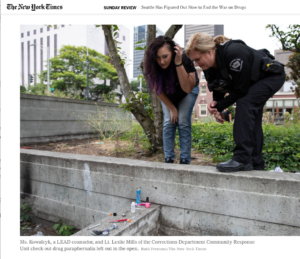
They have no idea what to do, at least beyond declaring that they do and then watching it continue unabated. If they can’t—and they clearly can’t—figure out what to do about thousands of people unloading their bowels in public around town each day, what chance do the Orcas really have as 3 million gallons of human waste pour into Puget Sound now and again? If they can’t figure out what to do as the junkies turn Seattle into Needle Park, then do you really think they can rise to the occasion of handling the vital salmon runs that numbered more than 53,000 in the early 1970s but by 2017 had evaporated to just around 977? If they can’t keep a habitual criminal with plenty of violent crimes on his rap sheet off the street for more than 24-hours after he’s committed yet another crime against a fellow citizen, is it likely they actually can actually come through for the killer whales, wolves, cougars and bears that don’t vote?
Yeah, exactly.
On Tuesday, Seattle voters will go to the polls for what The Seattle Times has declared will be a ‘gut check’ moment for the city’s residents. I disagree. Puget Sound is rapidly becoming Poop Harbor, out on the water and onshore. This is not the time for a civic gut check, but rather a brain scan.
Speaking of which, I don’t need a nightcap to take the edge off this, but it does help.


